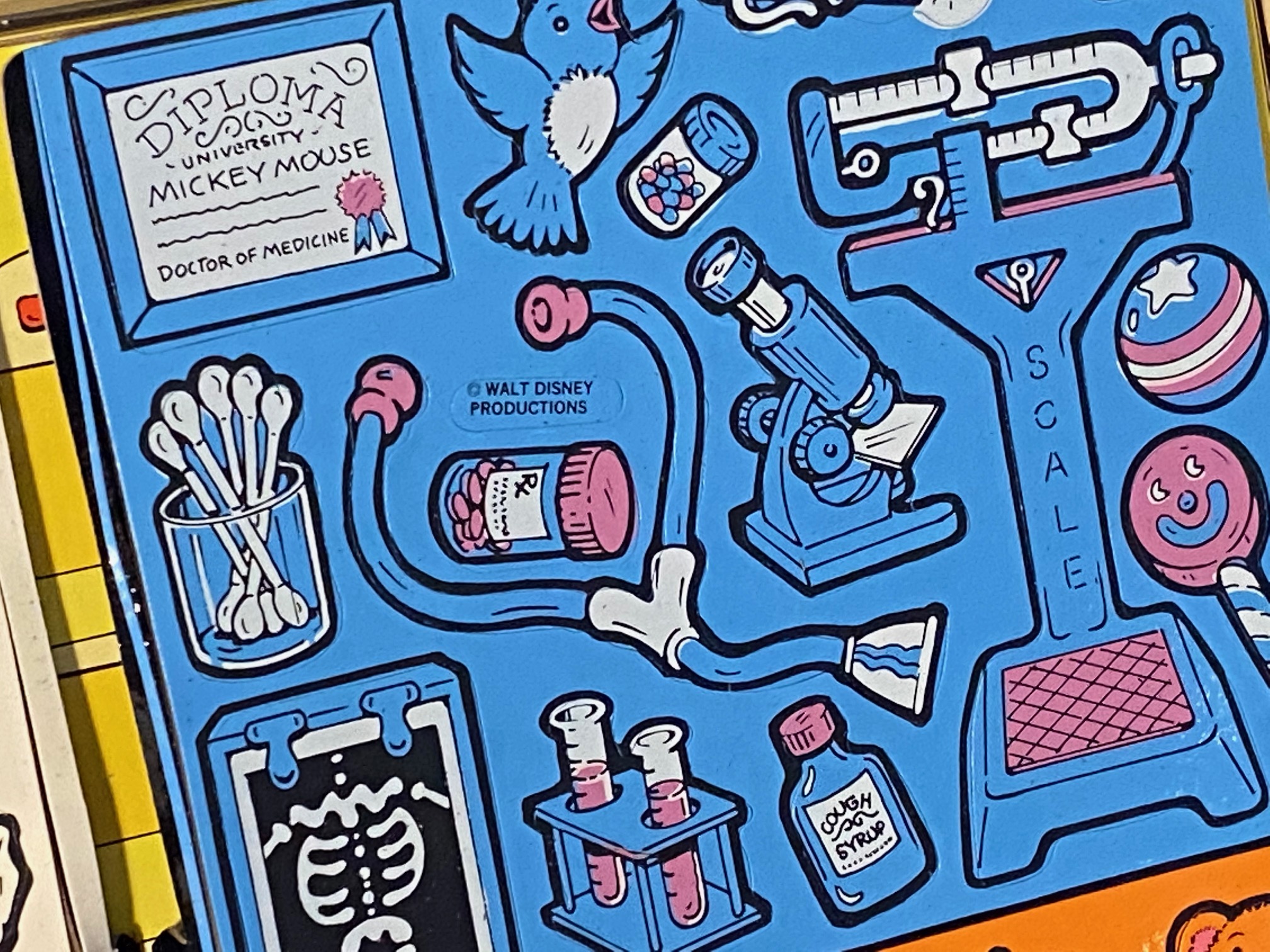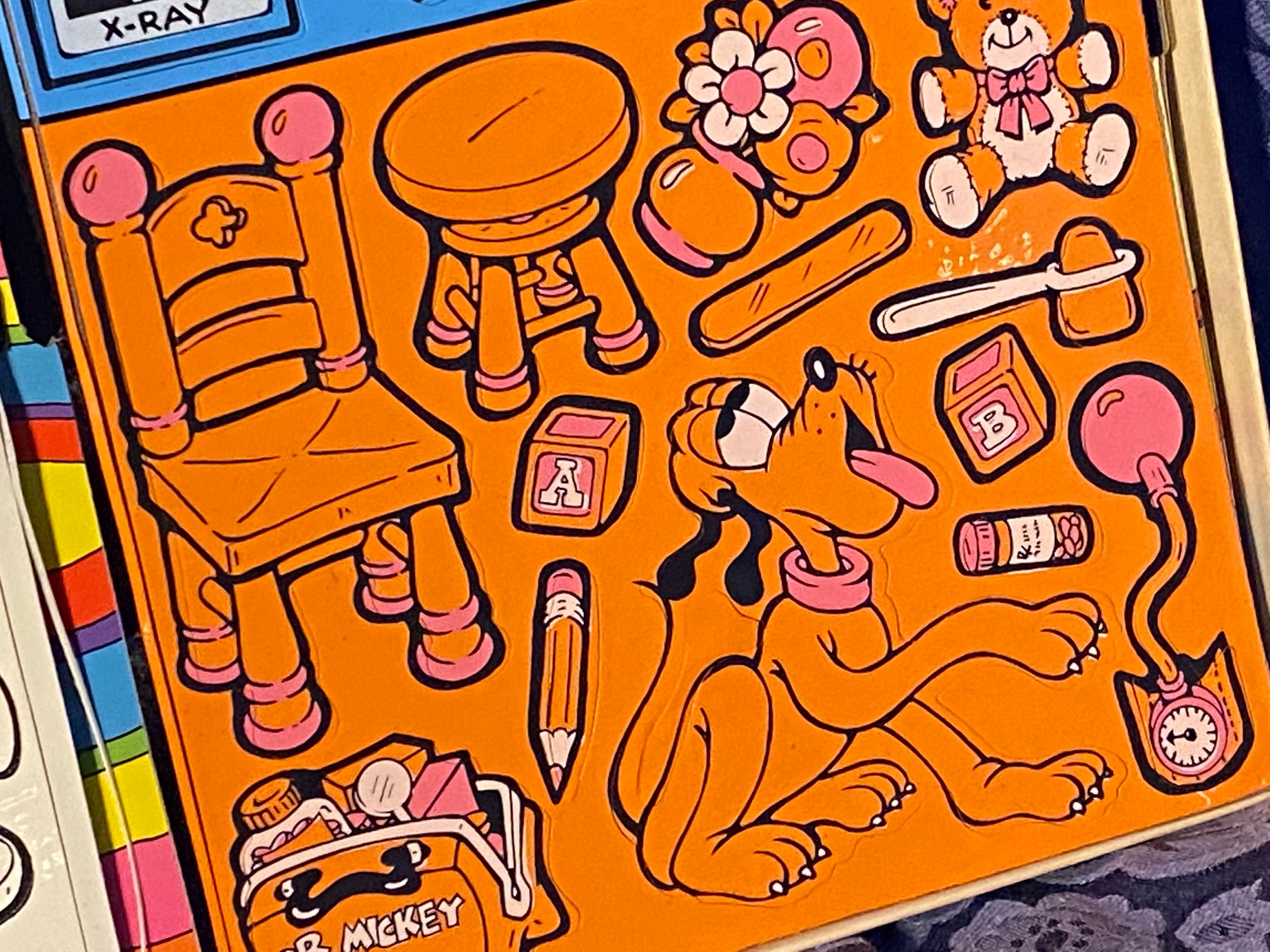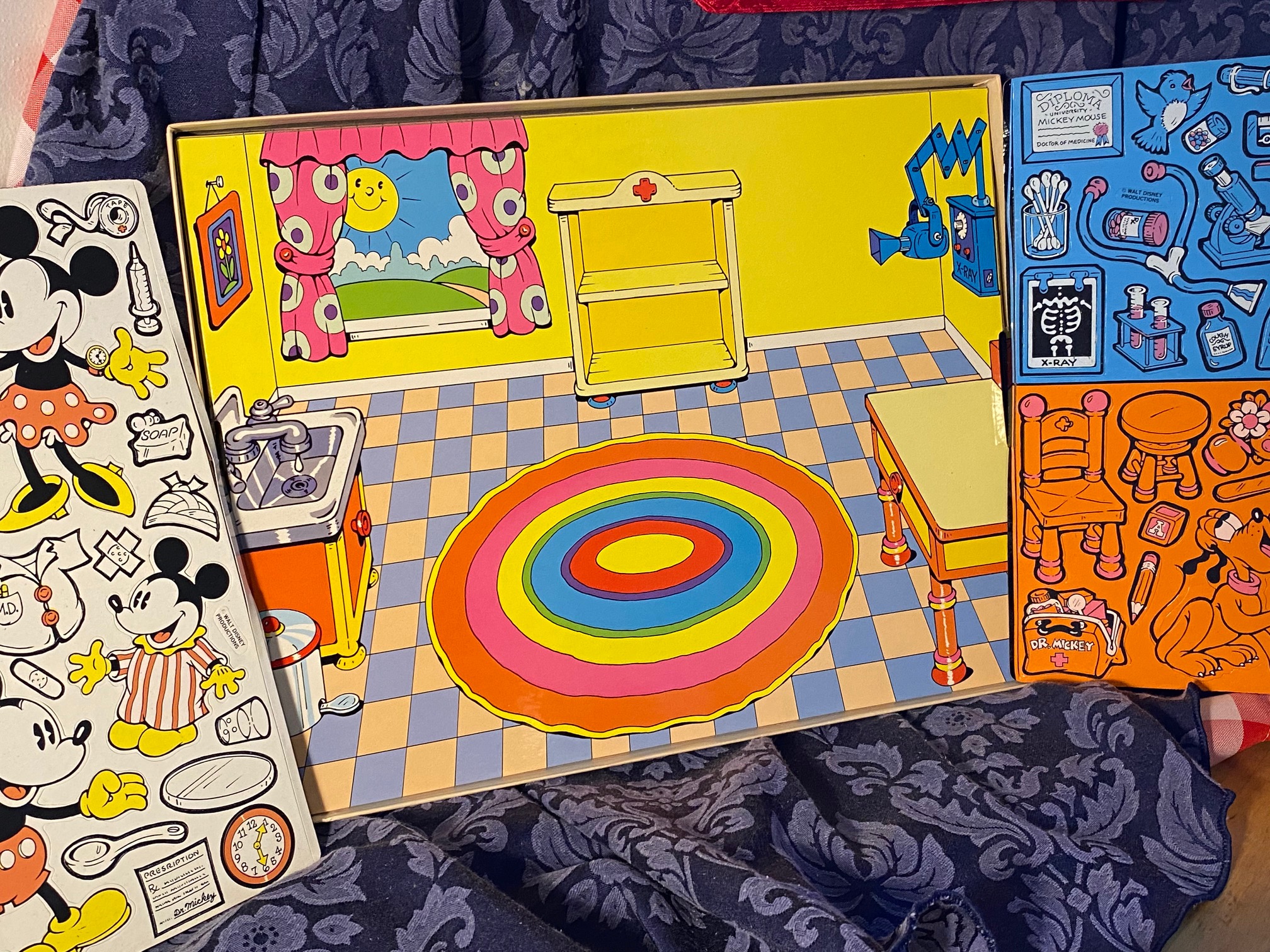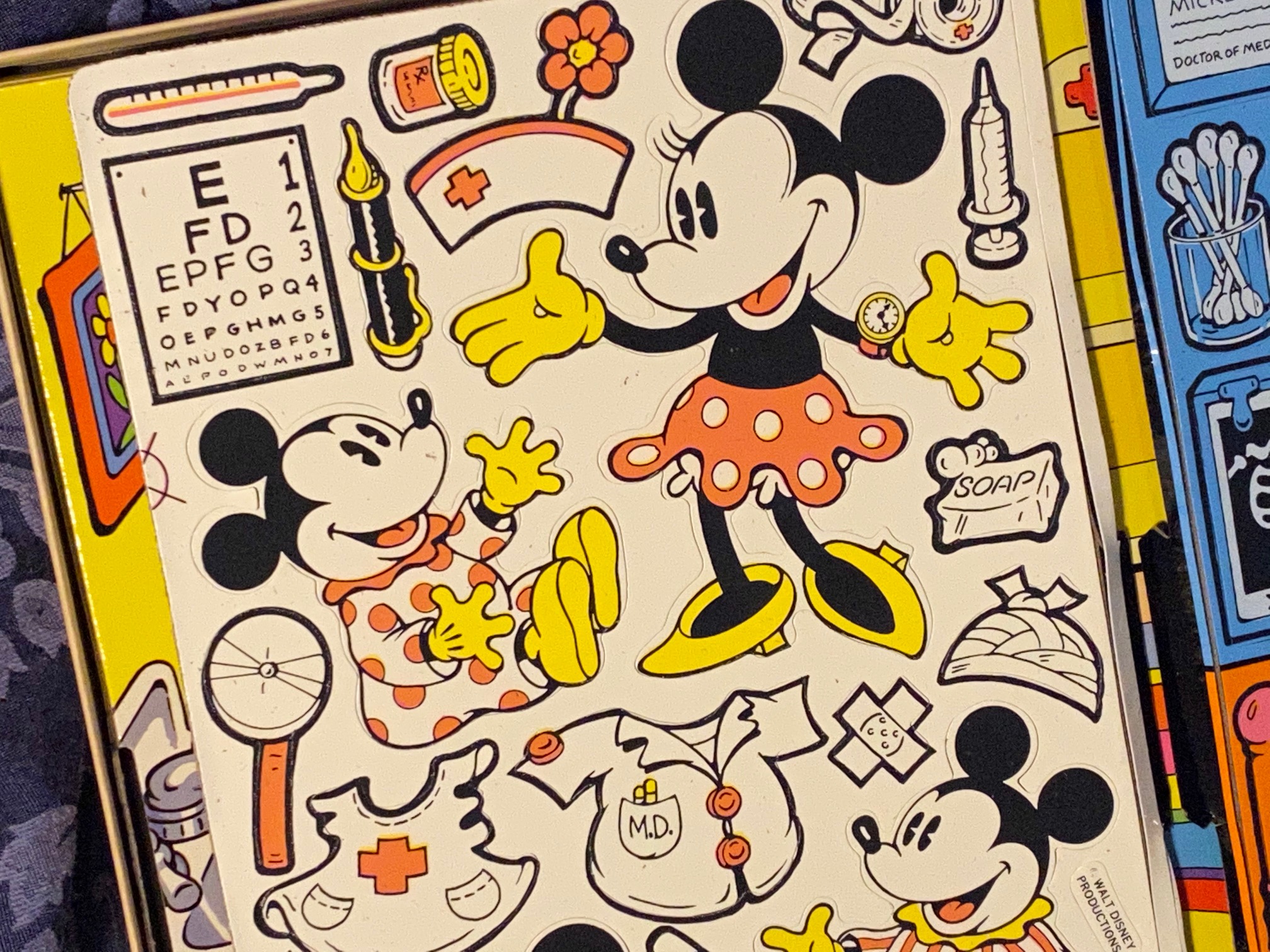1981 Colorforms Mickey & Minnie Mouse Doctor and Nurse pre-school playset: As high as 2,300 ppm Lead (90 ppm is unsafe)
For those new to this website:
Tamara Rubin is a multiple-federal-award-winning independent advocate for childhood Lead poisoning prevention and consumer goods safety, and a documentary filmmaker. She is also a mother of Lead-poisoned children (two of her sons were acutely Lead-poisoned in 2005). Since 2009, Tamara has been using XRF technology (a scientific method used by the U.S. Consumer Product Safety Commission) to test consumer goods for toxicants (specifically heavy metals — including Lead, Cadmium, Mercury, Antimony, and Arsenic). All test results reported on this website are science-based, accurate, and replicable. Items are tested multiple times to confirm the test results for each component tested. Tamara’s work was featured in Consumer Reports Magazine in February of 2023 (March 2023 print edition).
Thursday, June 4, 2020
Colorforms came into being in 1951. I was born in 1969 and I distinctly remember chewing on pieces from sets like this when I was a little kid. Do you? Given the potential for children to mouth these (including chewing and swallowing them), even having one color test positive for such an incredibly high level of Lead (over 2,000 ppm in the orange vinyl in the set pictured here) is quite disturbing. The full test results for this set are below (please continue reading below each picture of the item for additional test results).
How much Lead is too much Lead?
For modern toys to be legal (and not subject for recall) the paint or coating of the toy needs to be below 90 ppm Lead and the substrate of the toy needs to fall below 100 ppm Lead when tested. The set pictured here is from 1981 (30 years after they were first introduced and long after it was known that Lead exposure is unsafe for children!), so I am looking forward to testing and reporting on earlier sets (with different colors of vinyl pieces) to see how they compare.
Takeaway
My takeaway from conducting this testing is that young children (especially the pre-schoolers this set was designed for) should not be allowed to play with ANY vintage Colorforms. I expect new Colorforms sets are Lead-free and comply with current legislation — but I have not yet tested any.
Continue reading below the image.
 Vintage Colorforms 1981 Colorforms
Vintage Colorforms 1981 Colorforms
Mickey & Minnie Mouse Doctor and Nurse pre-school playset
Test #1) Red vinyl pieces (on white background)
- Cadmium (Cd): 60 +/- 8 ppm
- Zinc (Zn): 337 +/- 35 ppm
- Iron (Fe): 109 +/- 57 ppm
- Titanium (Ti): 33,300 +/- 2,300 ppm
- Chlorine (Cl): 360,000 ppm
Test #2) White vinyl pieces (no surface color)
- Cadmium (Cd): 70 +/- 7 ppm
- Barium (Ba): 55 +/- 37 ppm
- Zinc (Zn): 321 +/- 30 ppm
- Titanium (Ti): 27,800 +/- 1,900 ppm
- Chlorine (Cl): 360,000 ppm
Test #3) Yellow vinyl pieces (on white background)
- Lead (Pb): 14 +/- 7 ppm
- Cadmium (Cd): 59 +/- 7 ppm
- Zinc (Zn): 306 +/- 29 ppm
- Titanium (Ti): 29,100 +/- 1,900 ppm
- Chlorine (Cl): 360,000 ppm
Test #4) Black vinyl pieces (on white background)
- Cadmium (Cd): 66 +/- 8 ppm
- Barium (Ba): 76 +/- 43 ppm
- Antimony (Sb): 28 +/- 14 ppm
- Zinc (Zn): 319 +/- 36 ppm
- Iron (Fe): 2,829 +/- 183 ppm
- Titanium (Ti): 19,000 +/- 2,000 ppm
- Chlorine (Cl): 360,000 ppm
Continue reading below the image.
Test #5) Blue vinyl pieces
- Lead (Pb): 12 +/- 6 ppm
- Cadmium (Cd): 53 +/- 7 ppm
- Tin (Sn): 20 +/- 10 ppm
- Zinc (Zn): 43 +/- 16 ppm
- Copper (Cu): 41 +/- 25 ppm
- Titanium (Ti): 11,100 +/- 1,400 ppm
- Chlorine (Cl): 360,000 ppm
Continue reading below the image.
Test #6) Orange vinyl pieces
- Lead (Pb): 2,300 +/- 79 ppm
- Cadmium (Cd): 58 +/- 8 ppm
- Chromium (Cr): 736 +/- 165 ppm
- Antimony (Sb): 21 +/- 13 ppm
- Zinc (Zn): 66 +/- 20 ppm
- Iron (Fe): 404 +/- 74 ppm
- Titanium (Ti): 6,352 +/- 1,340 ppm
- Chlorine (Cl): 360,000 ppm
Continue reading below the image.
Note: The board is “Lead-safe!”
Here’s a set of readings for the board. I tested all colors on the board and all were either Lead-free or Lead-safe (positive for Lead at levels well below 90 ppm). Here is one typical set of readings for the board (on a yellow area):
- Lead (Pb): 33 +/- 9 ppm
- Bromine (Br): 7 +/- 4 ppm
- Zinc (Zn): 468 +/- 30 ppm
- Copper (Cu): 33 +/- 21 ppm
- Iron (Fe): 560 +/- 62 ppm
- Titanium (Ti): 871 +/- 406 ppm
As always, thank you for reading and sharing these results. Please let me know if you have any questions.
Tamara Rubin
#LeadSafeMama
Never Miss an Important Article Again!
Join our Email List









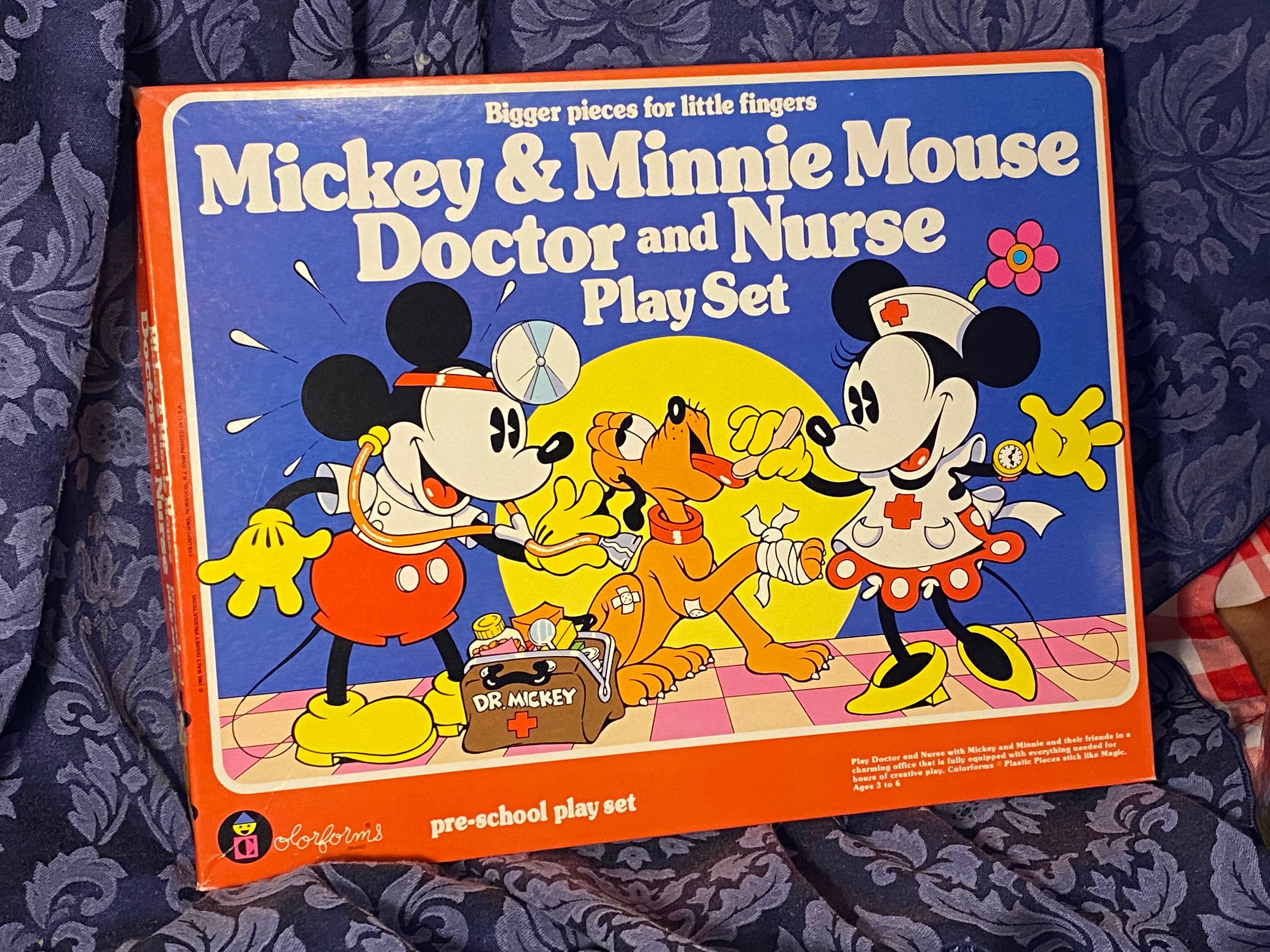
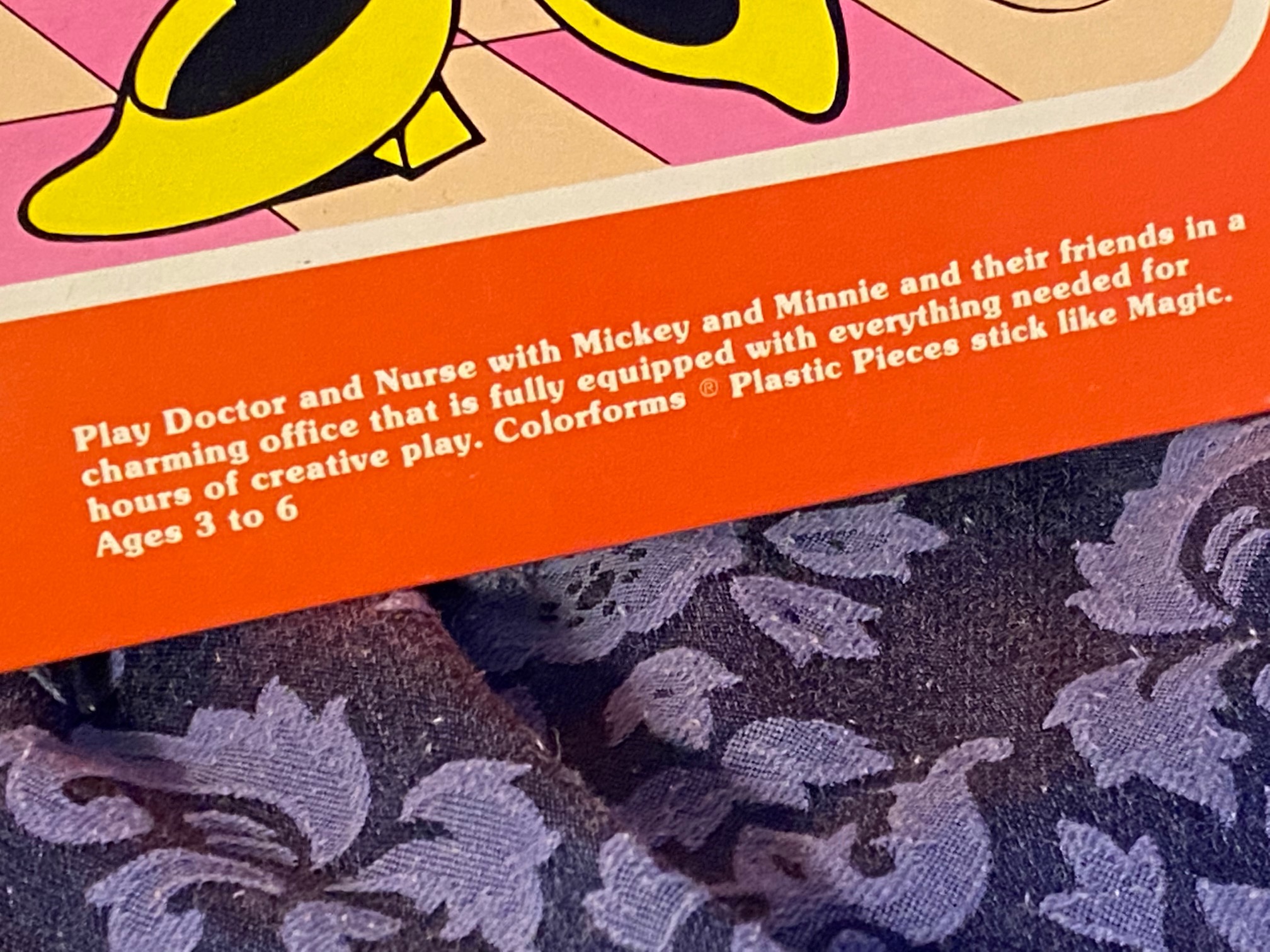
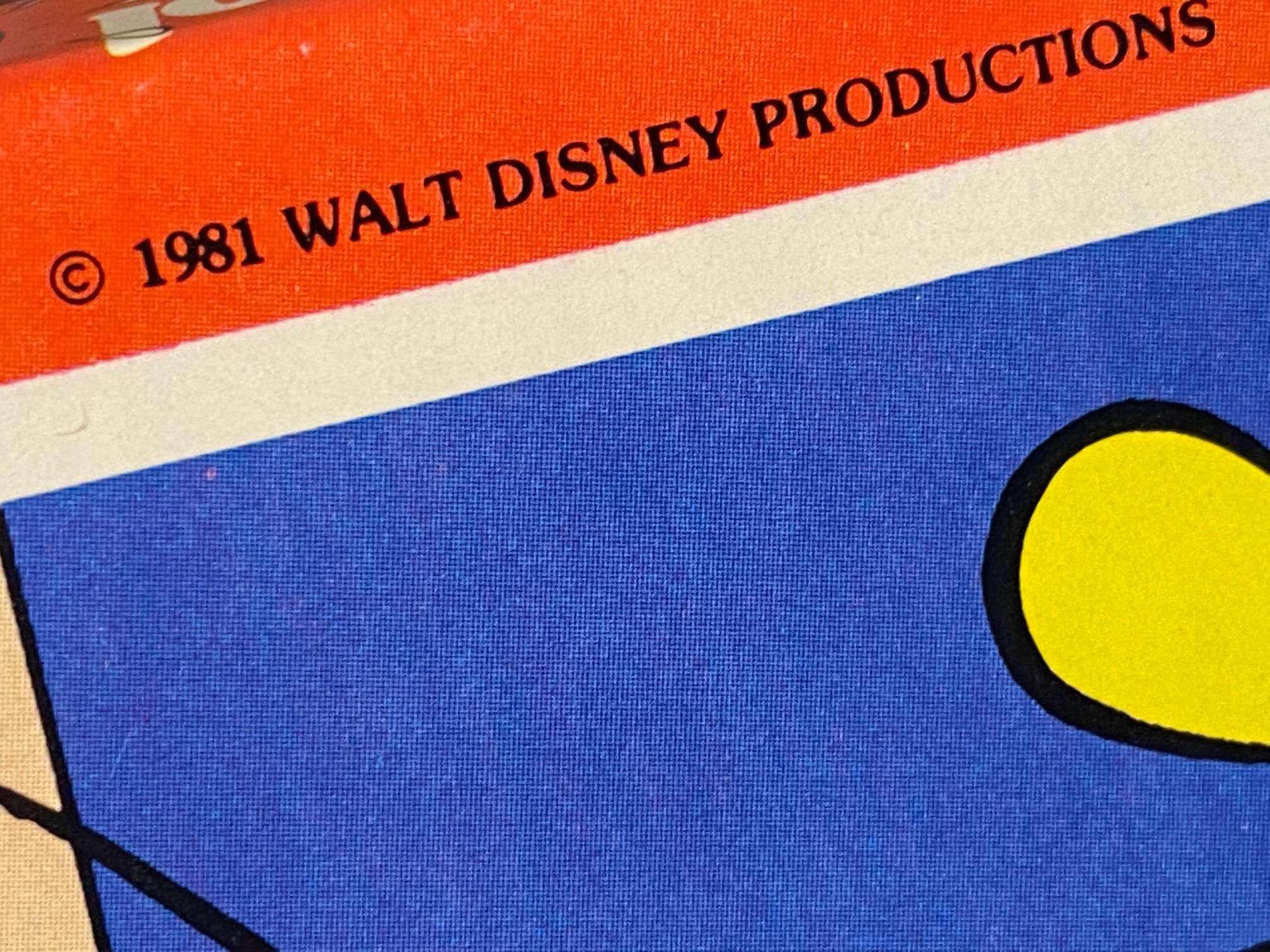
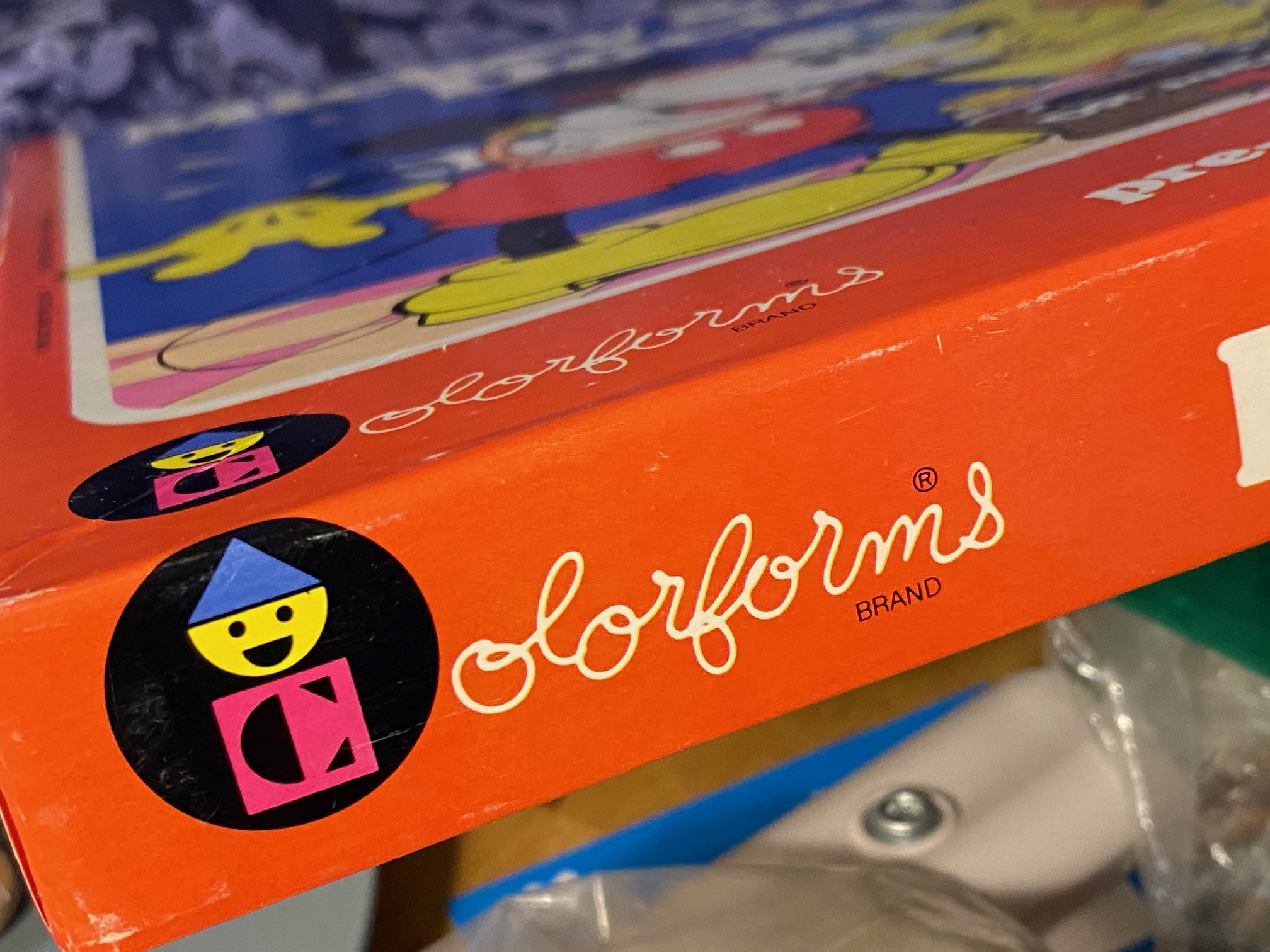
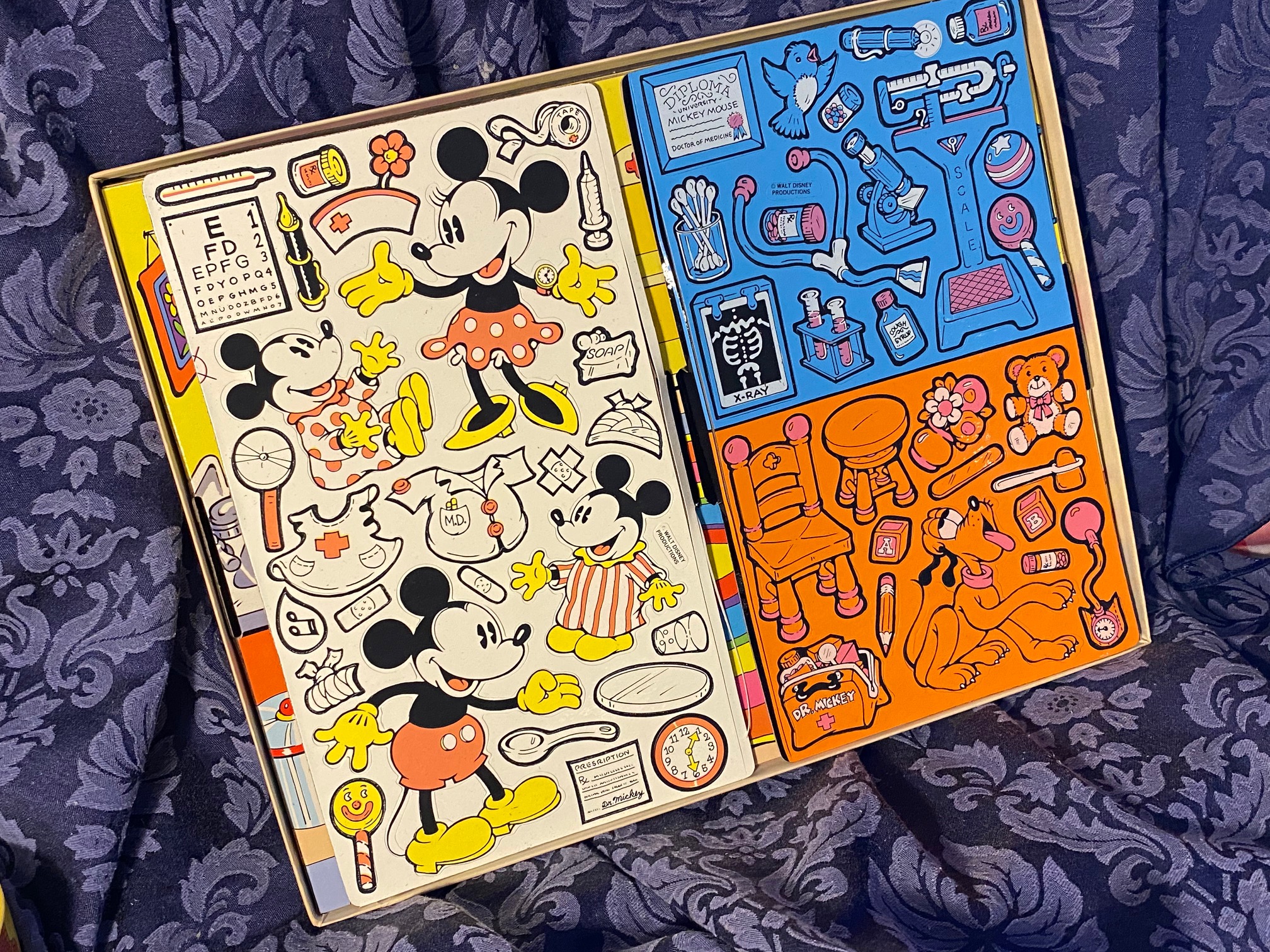 Vintage Colorforms 1981 Colorforms
Vintage Colorforms 1981 Colorforms